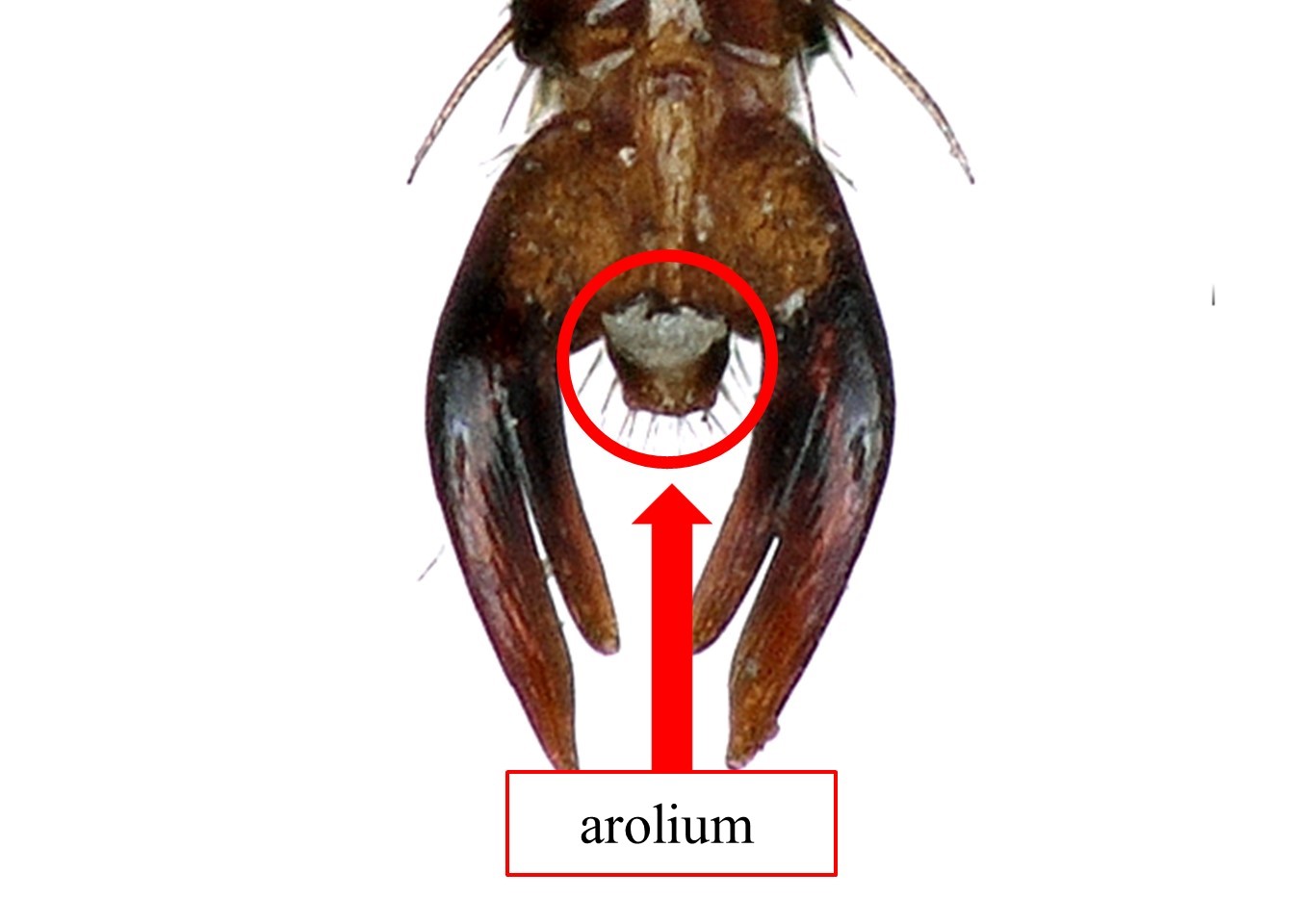Family: Megachilidae
Subfamily: Megachilinae
Tribe: Anthidiini
Genus: Cyphanthidium Pasteels, 1969
Subgenera: none
Common name: none
Cyphanthidium consists of medium-sized bees that range in body length from 7.5–8.5 mm. The integumentintegument:
a tough, protective outer layer
of the head, thorax, and abdomen can be black or brown, with cream to yellow maculations and unbroken maculate bandsbands:
usually referring to bands of hair or bands of color that traverse across an abdominal segment
on each tergumtergum:
the segments on the top side of the abdomen, often abbreviated when referring to a specific segment to T1, T2, T3, T4, T5, T6, or T7 (Michener 2007Michener 2007:
(Michener 2007Michener 2007:
Michener, C.D. 2007. The Bees of the World (2nd ed.). Johns Hopkins University Press, Baltimore and London, 953 pp.).
Cyphanthidium contains 2 described species, C. intermedium and C. sheppardi, from southern Africa (Michener 2007Michener 2007:
Michener, C.D. 2007. The Bees of the World (2nd ed.). Johns Hopkins University Press, Baltimore and London, 953 pp.); none are known to occur in the U.S. or Canada.
(modified from Michener 2007Michener 2007:
Michener, C.D. 2007. The Bees of the World (2nd ed.). Johns Hopkins University Press, Baltimore and London, 953 pp.)
 broadly emarginateemarginate:
broadly emarginateemarginate: with median apicalapical:
with median apicalapical: trilobed.
trilobed.Cyphanthidium may resemble Afranthidium in their size and in having continuous colored bandsbands:
usually referring to bands of hair or bands of color that traverse across an abdominal segment
on the abdomen. Cyphanthidium can be distinguished from Afranthidium by the presence of an aroliaarolia:
the cushion-like pad between the tarsal claws found at the ends of some bees' legs
 and the four-toothed mandibles of the females. Cyphanthidium and Afranthidium are sympatricsympatric:
and the four-toothed mandibles of the females. Cyphanthidium and Afranthidium are sympatricsympatric:
overlapping geographic distribution
in South Africa; however, Afranthidium has a broader distribution that extends to southern Europe and western Asia (Michener 2007Michener 2007:
Michener, C.D. 2007. The Bees of the World (2nd ed.). Johns Hopkins University Press, Baltimore and London, 953 pp.).
There are no known invasives.
Cyphanthidium have been collected on Fabaceae, Boraginaceae, and Acanthaceae (Gess and Gess 2007Gess and Gess 2007:
Gess, S.K. and F.W. Gess. 2007. Notes on nesting and flower visiting of some anthidiine bees (Hymenoptera: Megachilidae: Megachilinae: Anthidiine) in southern Africa. Journal of Hymenoptera Research 16: 30ndash;50.).
Both known species, C. intermedium and C. sheppardi, are found in southern Africa in Namibia, Zimbabwe, and Cape Providence of South Africa (Michener 2007Michener 2007:
Michener, C.D. 2007. The Bees of the World (2nd ed.). Johns Hopkins University Press, Baltimore and London, 953 pp.).
Distribution map generated by Discover Life -- click on map for details, credits, and terms of use.